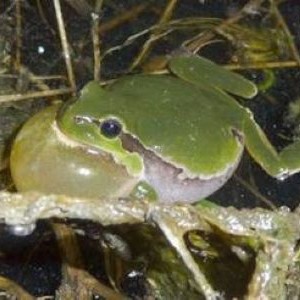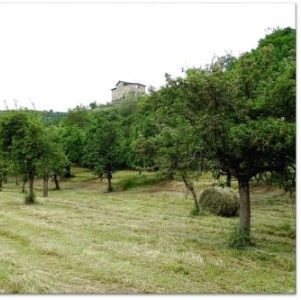Methods in agricultural landscape
Character species approaches: Methods for recording valuable plant populations

- For recording the High Nature Value farmland relevant throughout Europe, a specific approach was developed for Germany. On farmland, the number of certain character species along a transect is recorded. The nature conservation value of the area is derived from this.
- Methods of the German federal states for grassland: The high nature value farmland approach in Germany has also been developed on the basis of some existing character species methods in grassland. These can also be used for the assessment of species-rich grassland.
- Special approaches for arable land: In the project Agriculture for Biodiversity, an extended arable species list and a standardised recording method were developed, which especially seems necessary with regard to organic farmland.
Methods in projects to protect endangered animal species

- General animal observation: There are a variety of well-documented and scientifically accepted methods for recording the presence of animal species. Spontaneous observations are also possible. They can be a motivation to expand monitoring in the future to targeted observation of these species as well.
- Auditory detection of amphibians: Auditory detection is a simple and practice-oriented standard method for the semi-quantitative and qualitative estimation of batrachian populations, including all vocal Central European frogs (number of a species as well as number of different species).
- Temporary mouse burrow closure – foraging habitat quality for birds of prey: The temporary mouse burrow closure method measures the occurrence of field mice on a field section and is a suitable method for assessing the foraging habitat quality of an area, e.g. for red kites and other endangered species of birds of prey. On a field area of about 250 m² all mouse burrows are closed by stepping on them. All holes that have been re-opened after 24 hours are counted and the number gives information on the foraging quality of the area.
Recording of valuable habitats

- Orchard meadows: The status of valuable habitats such as orchard meadows can be assessed by mapping fruit trees and small-scale structures. Additionally, the high nature value farmland or other character species approaches as explained above can be applied.
- Dry grasslands: Determination of the status of dry grasslands registered as flora fauna habitat (FFH) areas follows assessment criteria of FFH management planning, which are "integrity of habitat-typical habitat structures", "integrity of habitat-typical species population" as well as "negative effects".
- Hedgerows: Here we record the structural diversity of the woody plants with associated fringe, the flowering period and the special features of the environment. For the assessment of the fringe, we refer to the identification species method for the recording of fallows according to the approach for High Nature Farmland and recommend mapping particularly valuable and endangered species.

